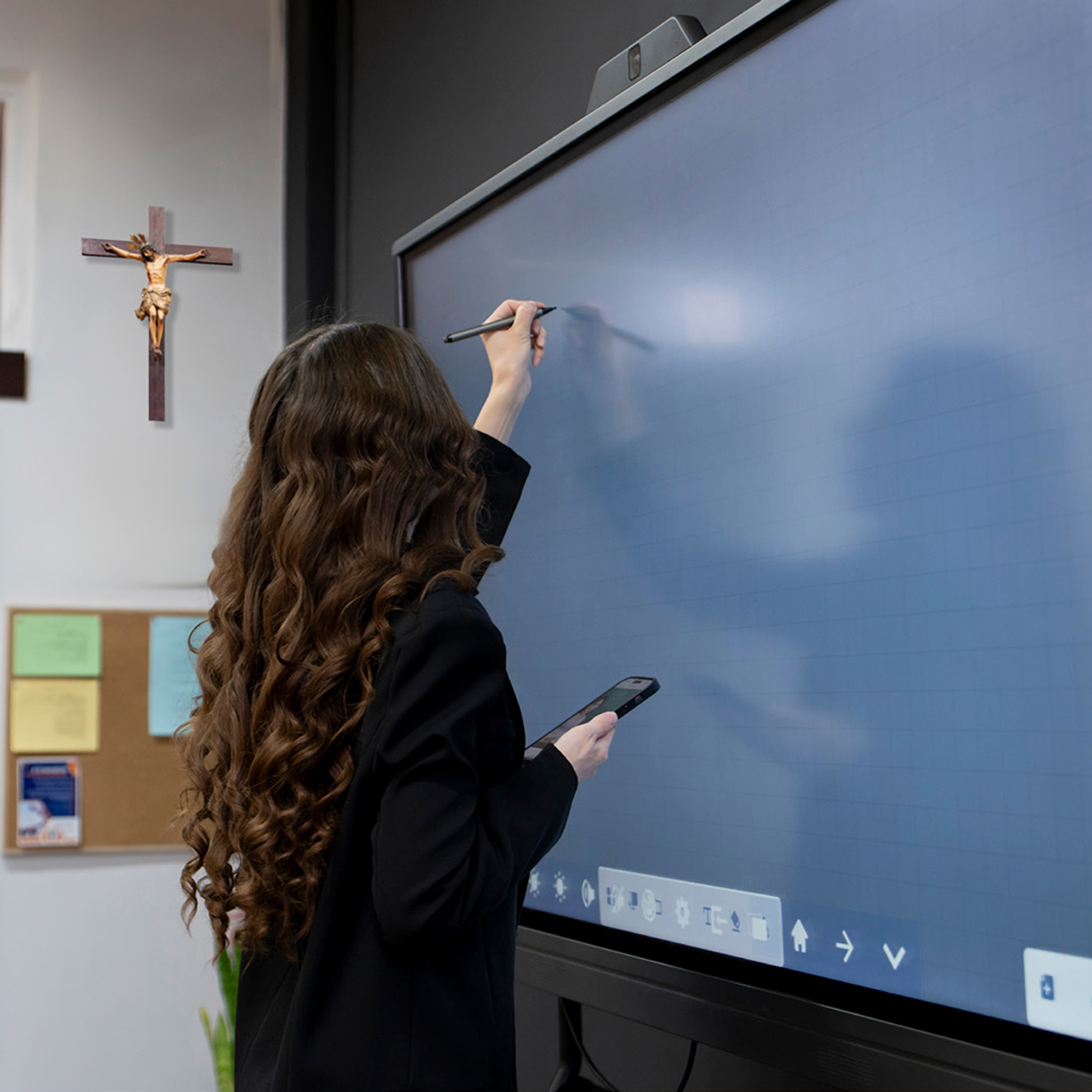Solutions to the Teacher Shortage
Last summer a friend who leads a successful college preparatory Catholic high school called in a quandary – for the past five months he had been actively searching for a Chemistry teacher. During that time, he had one applicant. Yes, just one applicant in five months, and the applicant was not qualified. This is not a unique example. The “Great Resignation” has affected all corners of our economy, including the education sector.
In January, 55 percent of teachers said they’re considering leaving their jobs sooner than they’d planned because of the Covid-19 pandemic (source: National Education Association poll, the nation’s largest teachers’ union). In the same poll 90% of teachers said that feeling burned out is a serious problem.
According to the Wall Street Journal, burned-out teachers are leaving the classroom for jobs in the private sector, where talent-hungry companies are hiring them—and often boosting their pay—to work in sales, software, healthcare, and training, among other fields. The rate of people quitting jobs in private educational services rose more than in any other industry in 2021, according to federal data.
As Rick Hess notes in his essay Education after the Pandemic, “even before the pandemic, staffing American schools had been no easy task. Public schools must hire 300,000 teachers per year just to replace those lost to attrition. That's more than the total number of graduates produced by all of America's selective colleges annually—with the term "selective" used to mean any institution that accepts fewer than half of its applicants. Even if every single graduate from the nation's flagship universities, the Ivy League, and prestigious liberal-arts colleges opted to teach, it wouldn't plug the gap left by departures each year.”
What is a Catholic school leader to do during these challenging times as they plan for next fall? Here are three solutions to our current teacher shortage crisis.
- Start an Alumni Service Corps. In the spring of 1993, when I was home during Easter break from university, I stopped by my alma mater, Marquette University High School, and met with the President of the school. He asked what I was going to do upon graduation in a couple months. I said I had no idea! He asked if I wanted to help him start the school’s Alumni Service Corps. He explained that Regis Jesuit High School in Denver had recently started a similar program. The program brought back young talent to the school to teach, coach, mentor, and work in development. The young Corps members brought energy to the school much like scholastics did twenty years ago. Marquette High’s program, now in its 29th year, has had over 100 young alumni work on campus.
These young Corps members often teach two courses a semester (if qualified), coach sports, proctor study halls and dances and generally bring relief to full-time teachers. Some Corps members who are not qualified to teach can work in development or as a Teacher’s Assistant. Corps members live in community and serve the school. At De Smet Jesuit High School, just over 25% of their faculty and administrative leaders have come from the ranks of their Alumni Service corps. This program is a great way for a school to bring in young talent and retain them as full-time teachers and leaders. - Expand Your Recruiting Area. With new technologies, schools are less bound by geography than they once were. Schools can partner with an online education provider for teachers residing anywhere in the country to instruct their classes. For example, Cristo Rey Sacramento could not find a Chemistry teacher by the time school was about to start. The school partnered with Catholic Virtual to teach all their Chemistry classes this year. As the school’s President said, “I will 100 times over, take a qualified online teacher versus an unqualified in-person teacher.” By expanding a school’s recruitment area to the entire country, it increases the probability of finding a qualified teacher.
- Create a Career Changers Program. In 2003, an alum of Catholic education founded Education Pioneers. As a former teacher and a Stanford Law School graduate, he longed to combine his passion for education with his legal training. Serving as a network of charter schools’ legal counsel, he witnessed the excellent results that the network’s diverse leadership team achieved for historically underserved students. His vision crystallized: the education sector needed more exceptional talent, and exceptional talent needed a path into education. Education Pioneers was founded to bring thousands of exceptional leaders and managers into the sector, to advance the critical work of hundreds of education organizations, and to impact the education of millions of students nationwide.
A Catholic school could start a similar program to access career changers looking to make a difference later in their career. An engineer is qualified to teach math, a lawyer could teach rhetoric and expository writing, or a finance executive could teach economics and math.
Last summer a friend who leads a successful college preparatory Catholic high school called in a quandary – for the past five months he had been actively searching for a Chemistry teacher. During that time, he had one applicant. Yes, just one applicant in five months, and the applicant was not qualified. This is not a unique example. The “Great Resignation” has affected all corners of our economy, including the education sector.
In January, 55 percent of teachers said they’re considering leaving their jobs sooner than they’d planned because of the Covid-19 pandemic (source: National Education Association poll, the nation’s largest teachers’ union). In the same poll 90% of teachers said that feeling burned out is a serious problem.
According to the Wall Street Journal, burned-out teachers are leaving the classroom for jobs in the private sector, where talent-hungry companies are hiring them—and often boosting their pay—to work in sales, software, healthcare, and training, among other fields. The rate of people quitting jobs in private educational services rose more than in any other industry in 2021, according to federal data.
As Rick Hess notes in his essay Education after the Pandemic, “even before the pandemic, staffing American schools had been no easy task. Public schools must hire 300,000 teachers per year just to replace those lost to attrition. That's more than the total number of graduates produced by all of America's selective colleges annually — with the term "selective" used to mean any institution that accepts fewer than half of its applicants. Even if every single graduate from the nation's flagship universities, the Ivy League, and prestigious liberal-arts colleges opted to teach, it wouldn't plug the gap left by departures each year.”
What is a Catholic school leader to do during these challenging times as they plan for next fall? This paper outlines three solutions to our current teacher shortage crisis.
- Start an Alumni Service Corps. In the spring of 1993, when I was home during Easter break from university, I stopped by my alma mater, Marquette University High School, and met with the President of the school. He asked what I was going to do upon graduation in a couple months. I said I had no idea! He asked if I wanted to help him start the school’s Alumni Service Corps. He explained that Regis Jesuit High School in Denver had recently started a similar program. The program brought back young talent to the school to teach, coach, mentor, and work in development. The young Corps members brought energy to the school much like scholastics did twenty years ago. Marquette High’s program, now in its 29th year, has had over 100 young alumni work on campus.
These young Corps members often teach two courses a semester (if qualified), coach sports, proctor study halls and dances and generally bring relief to full-time teachers. Some Corps members who are not qualified to teach can work in development or as a Teacher’s Assistant. Corps members live in community and serve the school. At De Smet Jesuit High School just over 25% of their faculty and administrative leaders have come from the ranks of their Alumni Service corps. This program is a great way for a school to bring in young talent and retain them as full-time teachers and leaders. - Expand Your Recruiting Area. With new technologies, schools are less bound by geography than they once were. Schools can partner with an online education provider for teachers residing anywhere in the country to instruct their classes. For example, Cristo Rey Sacramento could not find a Chemistry teacher by the time school was about to start. The school partnered with Catholic Virtual to teach all their Chemistry classes this year. As the school’s President said, “I will 100 times over, take a qualified online teacher versus an unqualified in-person teacher.” By expanding a school’s recruitment area to the entire country, it increases the probability of finding a qualified teacher
- Create a Career Changers Program. In 2003, an alum of Catholic education founded Education Pioneers. As a former teacher and a Stanford Law School graduate, he longed to combine his passion for education with his legal training. Serving as a network of charter schools’ legal counsel, he witnessed the excellent results that the network’s diverse leadership team achieved for historically underserved students. His vision crystallized: the education sector needed more exceptional talent, and exceptional talent needed a path into education. Education Pioneers was founded to bring thousands of exceptional leaders and managers into the sector, to advance the critical work of hundreds of education organizations, and to impact the education of millions of students nationwide.
A Catholic school could start a similar program to access career changers looking to make a difference later in their career. An engineer is qualified to teach math, a lawyer could teach rhetoric and expository writing, or a finance executive could teach economics and math.
There is a lot of anecdotal and other data to suggest our teacher shortage crisis will not dissipate anytime soon. To prepare schools for this ongoing challenge, school leaders need to begin thinking outside of the box for teacher recruitment this fall. The approaches I’ve described are just a few suggestions for how schools can learn to adapt and innovate in our ever-changing environment.
More Articles




Let Us Help You
Or, Contact Us by Phone
U.S.: 1-772-783-1178
Int'l: 1-772-293-9657
Let Us Help You
Or, Contact Us by Phone
U.S.: 1-772-783-1178
Int'l: 1-772-293-9657
Accreditations and affiliations ensuring a world-class online and blended education




 Student Login
Student Login